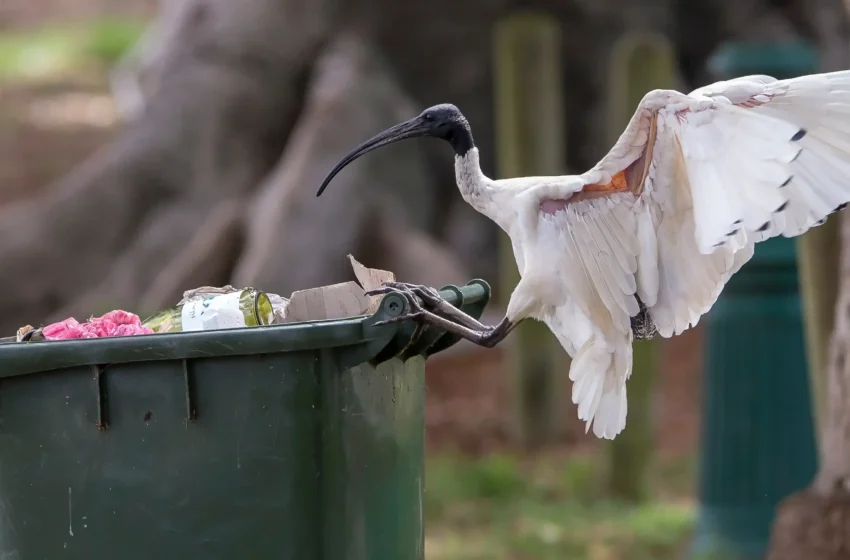Kyle Turner: The Rabbitohs legend who never forgot his roots

Bin chickens: Aussie icons of survival
Australians are known for their tradition of giving nicknames to things, including animals. Bin chickens are one of them. The bin chicken’s the cheeky Aussie nickname for the Australian white ibis, a bird you’ll spot rummaging around bins in just about every city across the country. They have become a cultural symbol in Australia, representing scrappiness, survival, and urban mischief. This article explains everything about the bin chickens— their origin, behaviour, cultural status, and why this cheeky bird holds a special space in Aussies’ lives.
What is a bin chicken?
Australian white ibis, known as the bin chicken, is commonly found in the urban areas of Australia. These birds were given the nickname ‘bin chickens’ because of their habit of searching for food in urban areas, particularly around garbage bins. Here is a brief breakdown of the bin chicken’s characteristics:
- Official name: Australian white ibis
- Colloquial name: Bin Chicken, Dump Chook, Tip Turkey, Picnic Pirate
- Scientific name: Threskiornis moluccus
- Appearance: Mostly white body with a bare black head and neck, plus a long, curved black beak. Females have shorter beaks and are slightly smaller than males.
- Breeding season: The bare skin under the wing changes from dull pink to dark scarlet during the mating season.
- Height and lifespan: Stands between 65 and 75 centimetres tall and has a lifespan of about 28 years.
Once a wetland bird, the ibis has adapted remarkably to city life, becoming an unlikely urban icon that Aussies both laugh at and admire.
What is the origin of Bin Chicken?
The bin chicken, or Australian white ibis, is an ordinary and widespread bird in Australia, especially in eastern, northern, and southwestern areas. They are native to Australia, New Guinea, and some neighbouring islands. While they are interrelated to Africa’s Sacred Ibis, there are different species from them. They are commonly found in the wetlands, and they have adapted to urban areas and are now commonly seen in gardens, parks, and even rubbish dumps.
Why do bin chickens flock to the city?
Originally creatures of wetlands, bin chickens made their way into urban settings for a few key reasons:
1. Habitat loss
Droughts, climate change, and urban expansion played a role in reducing the adaptability of conventional feeding grounds that forced white ibis to migrate to the populated areas to meet the need of food needs. Moreover, alterations in land use and the drying up of wetlands were also the reasons for their movement.
2. Sustainable food sources
Cities offer a consistent and easily available food in the form of food scraps. Public parks, school playgrounds, junkyards, and picnic spots provide an expected supply of scraps, like chips, remnant sandwiches, and many more.
3. Change in climate and urban haven
Droughts and other climatic events have aggravated the problem, forcing ibises to move forward to the cities. Moreover, the urban environment also offers appropriate locations for roosting and nesting, especially in parks and other green areas.
4. Opportunistic behaviour
Bin Chickens are adaptable and opportunistic, transforming city life fairly evenly. They’ve learned to open bin covers, grab food mid-air, and even sneak from unsuspecting people at the beach, displaying remarkable urban intelligence.
Where are bin chickens found in Australian cities?
Bin chickens were historically rare in urban environments; they can be observed nationwide at east cost regions, including:
- Key locations: Melbourne, Sydney, Brisbane, Gold Coast, Adelaide, Darwin, Perth, Western Australia, and neighbouring places in south-western Australia.
- Gathering places: Schools’ playgrounds, public parks, food courts, and even near beaches.
They are obvious in warm weather, when picnics and other human activities are at their peak.
How do Bin chickens play their ecological role?
Despite their reputation, Bin chickens serve the environment significantly by controlling pest populations, soil erosion, and dispersing seeds. They play the following ecological role:
- Pest controller: Bin chickens are the natural predators as they eat insects, invertebrates, including spiders, small animals, and crustaceans. They also eat other invertebrates, helping to keep their populations under control.
- Urban foragers: White ibises are famous for their scavenging behaviours in urban areas. They help clean up scraps in public areas. They are frequently seen feeding around the garbage bins, searching for food.
- Aerating the soil: Ibises do their bit for the land by poking around the dirt with their long, curved beaks while on the hunt for a feed, naturally turning and aerating the soil as they go. In this way, they also improve the soil’s quality.
- Seed distribution: Bin chickens consume seeds, and some of the seeds pass flawlessly through their digestive system, allowing them to be spread to new areas.
- Environmental parameters: They are considered to be environmental parameters, especially for wetland health. Their urban movement pattern indicates broader ecological shifts, drought and habitat loss.
Bin chickens in Aussie culture
The bin chicken holds a cheeky yet iconic spot in Aussie culture, symbolising our knack for humour, resilience, and finding beauty in the bizarre:
- Adaptability symbol: It highlights a changing landscape and resilience.
- Comedy gold: Regular stars in memes, social media jokes, and local humour.
- Pop culture icons: Featured in artwork, merchandise, and even mock campaigns calling for them to be Australia’s national bird.
Final Thoughts
In short, the Bin chickens, Australian white ibis, are one of Australia’s most chaotic birds. They are not just a cheeky bird; they are the emblem of modern Australia. They’ve become a true-blue Aussie icon—symbolising grit and a cheeky sense of humour that we all know and love. They have adapted to the urban environment and remind us not to take things seriously in life. So, next time you spot a bin chicken in the park, give it a cheeky nod.

